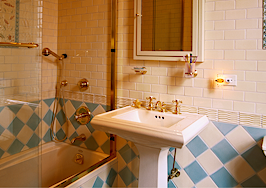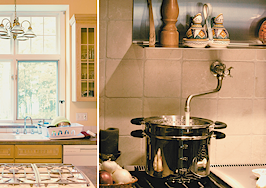 There’s so much noise out there on how to navigate a challenging market. This April, let Inman help you cut through the clutter to make smart business decisions in real time. All month long, we’re taking it Back to Basics and finding out how real estate pros are evolving their systems and investing personally and professionally to drive growth.
There’s so much noise out there on how to navigate a challenging market. This April, let Inman help you cut through the clutter to make smart business decisions in real time. All month long, we’re taking it Back to Basics and finding out how real estate pros are evolving their systems and investing personally and professionally to drive growth.
This article was last updated Apr. 24, 2023.
For a considerable period, the American dream has been associated with homeownership. However, the appearance and designs of homes have undergone significant transformations over time. These changes have been driven by the evolving preferences and lifestyles of homeowners. Moreover, as the nation has undergone shifts in industry and economy, housing styles have adapted to meet the changing demands.
Thankfully, Inman contributor Gerard Splendore is here to walk us through the World Wars, depressions, recessions, pandemics and the boom times as well.
A basic understanding of each architectural style that defines a decade will position you as a knowledgeable agent with your clients and make searching for a home with your buyers easier for everyone. Below, you’ll find a breakdown of what each decade meant for architecture and how homes kept up with the times.
Circa 1900
With roots in the British royal family, Victorian architecture found expression in a wide variety of architectural styles. Today, you will recognize Victorian houses by their grand scale, ornate exteriors and interiors featuring fine craftsmanship.
Circa 1910
Four square and kit homes in any number of variations are commonplace across the country. Today, these houses may have been updated, modernized or expanded.
Circa 1920
Housing styles took a sharp turn away from traditional styles with the introduction of Art Deco design, and a new age in home architecture came on the scene. Here’s what you should know about homes from this period.
Circa 1930
The stock market crash and Great Depression impacted everything that happened in the United States between 1929 and 1930. This was a period of great uncertainty, reflected in houses called bungalows. They were smaller and occupied one floor only.
Circa 1940
World War II lasted from 1939 to 1945, and the returning soldiers, post-war, were motivated by victory and the G.I. Bill, with guaranteed home loans to become homeowners. The term “The American dream” was born and consisted of a house “with a white picket fence,” 2.5 children, a car and a dog. The 1940s saw a blend of influences and trends, driven in large part by the needs of a post-World War II nation.
Circa 1950
Housing in the 1950s is characterized by homogeneous style and post-World War II sensibilities, affluence and family size. This period of architecture and home furnishings has become even more highly desired since it became known as “mid-century modern” in Cara Greenberg’s 1984 book Mid-Century Modern: Furniture of the 1950s. The television series Mad Men popularized this period of architecture and design. Highly desired by millennials, any agent well-versed in this style will be successful.
Circa 1960
Housing from the 1960s is characterized by innovations that made residential living more convenient than ever before. Popularly known as “the swinging Sixties,” a time of youth culture, political and cultural upheaval, housing styles remained fixed in the 1950s, with some exceptions. Kitchens became larger with attached dining areas or breakfast nooks, in addition to formal dining rooms.
Circa 1970
Housing stock from the 1970s blends holdover aesthetics from the 1960s with a new emphasis on organic and global elements. Gerard Splendore offers a guided tour through homes from “the decade that taste forgot.”
Circa 1980
The 1980s were a decade of success, excess and flashy expenditures of money in almost all areas of society. Conspicuous consumption was admired and something homeowners aspired to and eagerly sought.
Circa 1990
As the end of the millennium approached, homes became more about modern and contemporary styles, with a penchant for customization. Inman contributor Gerard Splendore walks real estate agents through architecture and home styles from the 1990s.
Circa 2000
As homes continued to develop into the 21st century, there was a return to traditional aesthetics, updated with modern features and conveniences. Gerard Splendore’s Circa series continues with styles of the 2000s.
Circa 2010
Newer homes range from the tiny to the vast and from simple and straightforward to up-to-the-minute smart homes. Gerard Splendore outlines the latest innovations in home styles and infrastructure so that you can provide more informed service to your clients.
You might have noticed we’re not quite through today. Stay tuned. We’ll keep adding to this week after week until we’re through today’s trends.












